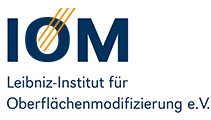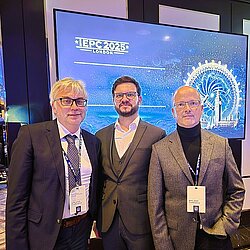From 14 to 19 September, the international space community gathered at Imperial College London (UK) for the 39th International Electric Propulsion Conference (IEPC) – the world’s premier conference on electric propulsion for spaceflight. Around 700 experts from research, industry, and space agencies discussed current developments and future perspectives.
The IOM was represented by three scientists from its cross-sectional unit “Tools”, who presented the latest results from laser-spectroscopic investigations of ion thrusters and the further development of the IonJet-Evo ion propulsion system. The aim of this work is to make electric propulsion systems more efficient, durable, and powerful – a crucial contribution to future space missions.
In addition, the IOM contributed to five further presentations, including tests on high-power Hall thrusters within the framework of the EU Horizon project CHEOPS-VHP-BB, where the institute provided precise beam diagnostic measurements. IOM researchers also participated in two international collaborative papers on “Recommended Practices”, helping to define new standards and best practices for scientific work on electric propulsion systems.
With a total of eight contributions and collaborations with 15 partner institutions across Europe, the USA, and Japan, the IOM clearly demonstrated its international visibility and scientific excellence in the emerging field of electric space propulsion.

